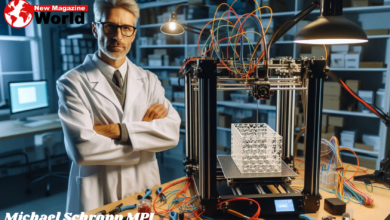The Rise of Taipei Self-Driving Gharry: Revolutionizing Urban Transport

Introduction to Taipei Self-Driving Gharry
In recent years, Taipei has emerged as a hub for technological innovation, particularly in the realm of transportation. Among the most intriguing advancements is the introduction of the Taipei self-driving gharry. Combining traditional charm with cutting-edge technology, these autonomous vehicles are set to transform urban mobility in Taiwan’s bustling capital. This article delves into the concept, development, benefits, challenges, and future prospects of the Taipei self-driving gharry.
The Concept of Taipei Self-Driving Gharry
A gharry, traditionally, refers to a horse-drawn carriage used in various parts of Asia. In Taipei, the term has been redefined to represent a modern, autonomous vehicle designed for urban transportation. The Taipei self-driving gharry integrates advanced artificial intelligence (AI), machine learning, and sensor technology to navigate the city’s streets without human intervention. These vehicles are designed to provide a seamless, efficient, and eco-friendly alternative to conventional public transport.
Development and Technological Innovations
The development of the Taipei self-driving gharry is a collaborative effort between government bodies, technology firms, and academic institutions. Key technological innovations include:
Advanced AI and Machine Learning
The core of the self-driving gharry is its AI system, which is capable of processing vast amounts of data in real-time. Machine learning algorithms enable the vehicle to learn from its environment, improving its navigation and decision-making capabilities over time.
Sensor and Camera Integration
A network of sensors and cameras ensures the vehicle can detect and respond to obstacles, pedestrians, and other vehicles. Lidar (Light Detection and Ranging) technology provides precise 3D mapping of the surroundings, enhancing the vehicle’s spatial awareness.
Communication Systems
The Taipei self-driving gharry utilizes Vehicle-to-Everything (V2X) communication, allowing it to interact with other vehicles, traffic signals, and infrastructure. This connectivity enhances safety and efficiency, reducing the likelihood of accidents and congestion.
Benefits of Taipei Self-Driving Gharry
The introduction of self-driving gharrys in Taipei brings numerous benefits to the city and its residents.
Enhanced Safety
Autonomous vehicles have the potential to significantly reduce traffic accidents caused by human error. The AI system in the Taipei self-driving gharry is designed to adhere to traffic regulations and respond swiftly to unexpected situations, minimizing the risk of collisions.
Environmental Sustainability
Self-driving gharrys are typically electric, contributing to reduced emissions and a smaller carbon footprint. This aligns with Taipei’s commitment to sustainability and its efforts to combat climate change.
Improved Mobility and Accessibility
The deployment of self-driving gharrys can improve mobility for all residents, including the elderly and those with disabilities. These vehicles offer a convenient and reliable mode of transport, enhancing accessibility throughout the city.
Economic Efficiency
By reducing the need for human drivers, operational costs are lowered. Additionally, the efficiency of self-driving gharrys can alleviate traffic congestion, leading to economic benefits through reduced travel time and increased productivity.
Challenges and Concerns
Despite the numerous advantages, the implementation of Taipei self-driving gharrys is not without challenges.
Technological Limitations
While significant progress has been made, autonomous vehicle technology is still in its nascent stages. Issues such as software reliability, sensor accuracy, and cybersecurity threats remain critical concerns.
Regulatory and Legal Hurdles
The regulatory framework for self-driving vehicles is still evolving. Establishing clear guidelines and standards for the operation of autonomous gharrys is essential to ensure safety and public acceptance.
Public Perception and Acceptance
Gaining public trust in autonomous technology is a significant challenge. Education and awareness campaigns are necessary to address concerns and highlight the benefits of self-driving gharrys.
Infrastructure Requirements
The successful integration of self-driving gharrys requires substantial infrastructure upgrades, including smart traffic signals, dedicated lanes, and robust V2X communication networks.
Future Prospects of Taipei Self-Driving Gharry
The future of Taipei self-driving gharrys looks promising, with several developments on the horizon.
Expansion of Autonomous Fleets
As technology matures and regulatory frameworks solidify, the number of self-driving gharrys is expected to increase. This expansion will enhance coverage and accessibility, making autonomous transport a mainstream option.
Integration with Public Transport
Self-driving gharrys could be integrated with existing public transport systems, providing first-mile and last-mile connectivity. This integration would create a seamless transport network, improving overall urban mobility.
Innovations in Vehicle Design
Ongoing research and development will lead to innovations in vehicle design, focusing on passenger comfort, energy efficiency, and enhanced safety features.
Global Influence
The success of Taipei’s self-driving gharry initiative could serve as a model for other cities worldwide. The lessons learned and best practices established in Taipei can guide the global adoption of autonomous urban transport.
Conclusion
The Taipei self-driving gharry represents a significant leap forward in urban transportation. By combining traditional elements with state-of-the-art technology, these autonomous vehicles offer a glimpse into the future of mobility. While challenges remain, the potential benefits in terms of safety, sustainability, and efficiency are substantial. As Taipei continues to innovate and adapt, the self-driving gharry could become a cornerstone of the city’s transport ecosystem, setting a precedent for urban centers globally.





